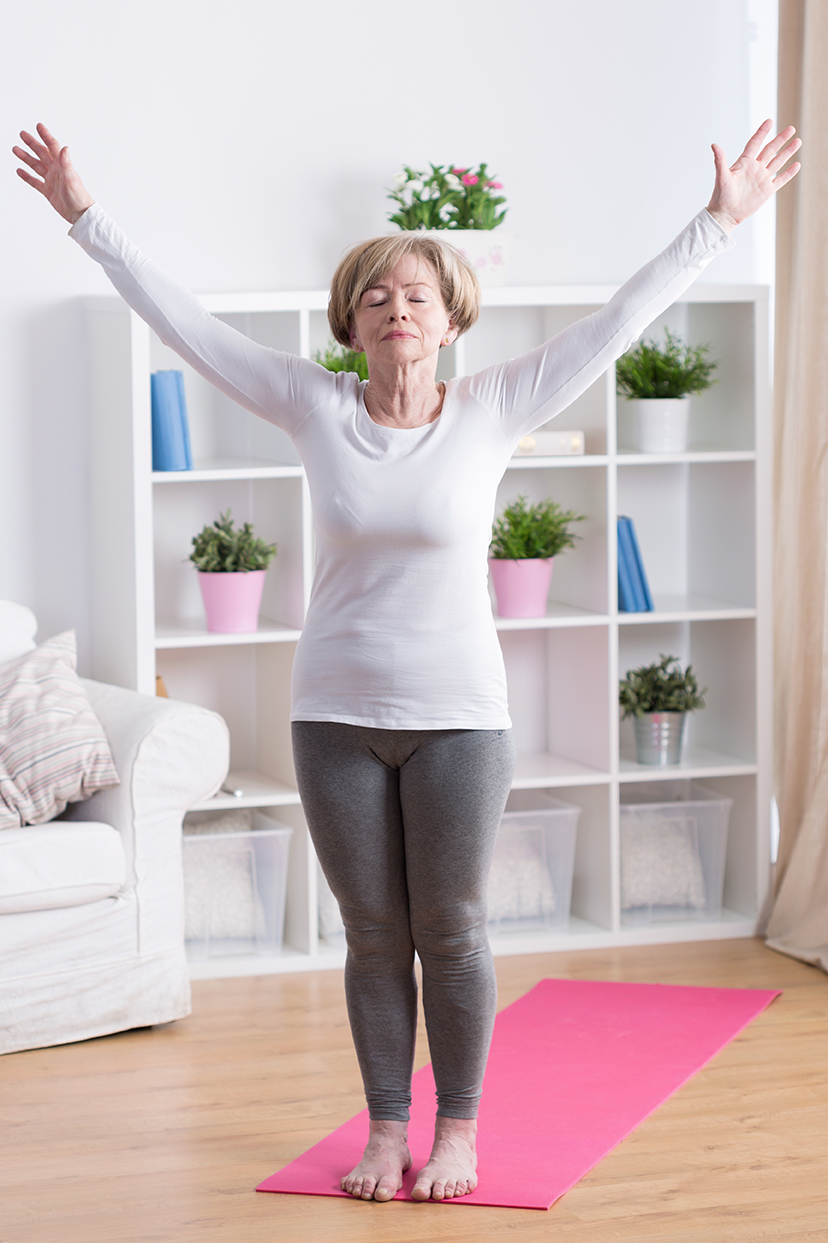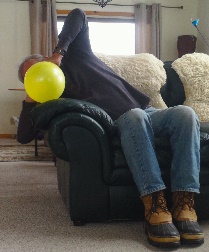 Say what?
Say what?
As a longtime yoga instructor, I know that holding our breath is not recommended for seniors. Yet, I often see clients restrict their breathing, while straining to hear me. When we limit oxygen intake, the heart produces distressing symptoms.
Mary, who has impaired hearing, is one example. Frequently she experienced the kind of chest pains that once sent her to the ER for a “nothing wrong” diagnosis. During fitness class one day, her chest pains were back. After she declined a call to 911, I asked Mary to take ten deep breaths. On the fourth slow breath, she had a big smile. Her chest pains were gone! Relieved and empowered, 90-year-old Mary had a tool.
Catch Your Breath
Even with good hearing, our stressful experiences lead to shallow breathing. Our pulse quickens. This fight-or-flight response shifts brain activity, limiting our ability to focus, learn and relax. Under stress, posture worsens, further reducing lung capacity. It seems the last thing on our minds is taking deeper breaths.
Yes, exercise improves oxygen, within limits. In performance studies of Olympians, researchers discovered that leg muscles are not the first to fatigue. Initially, respiratory muscles lose the ability to draw in adequate oxygen. Whether a person is confined to bed or training as an athlete, we can all improve lung capacity.
Breathing Technique 1

While volunteering at a spinal cord injury unit, I learned how some patients weaned off the respirator, using a balloon. You will not need one to try this. Drape yourself sideways, over the padded armrest of a couch. This gently compress one side of the lungs to open the side you will be working. Lift your arm overhead to open the ribs. Support your head in hand.
To strengthen the exhale: purse your lips and cup a fist over them for resistance. Imagine blowing up a balloon or use a real one. Exhale slowly against the resistance. As your diaphragm raises, lift your pelvic floor (at base of torso). Draw in your ribs. If this stimulates a cough, take a break. Fully relax with each inhale without using your fist. Notice how complete exhales encourage deeper inhales. Repeat ten times. Switch sides.
Breathing Technique 2
Before inhaling through the hands, wash to avoid infusing the lungs with whatever you have touched. I like a drop of therapeutic grade lemon oil on my palm. Again, drape sideways over the armrest and lift an arm overhead. Purse your lips and cup a fist over them. Imagine sipping through a straw. Take a long, deep inhale against the resistance. Soften your abdomen. Notice accessory muscles in your neck. Feel the back expand. With each exhale relax completely. Take breaks, if needed, completing ten resisted inhales. Then switch sides. How do you feel?
You just stimulated your parasympathetic system — as if you “lifted your foot off the accelerator” and are now “tapping the brakes”. Once your breaths deepen at rest, see John Douillard’s method for improving lung capacity during exercise, in his book listed below in References and Resources.
“Blessed are those who practice simple breathing.” Enjoy!
ACE-certified Medical Exercise Specialist and ERYT-500, Emma Spanda Johnson designs fitness solutions for clients of all abilities. Watch her video demonstration of these techniques during a free trial by clicking here. With an Orthopedic Specialty, Emma offers online personal training via www.FlightLive.US and your first 60 minutes are free.
References and Resources
Douillard, J. (2001). Body, mind, and sport : the mind-body guide to lifelong fitness, and your personal best. Three Rivers Press.
Jayawardena, R, et al. Exploring the Therapeutic Benefits of Pranayama (Yogic Breathing): A Systematic Review. Int J Yoga. 2020 May-Aug;13(2):99-110. doi: 10.4103/ijoy.IJOY_37_19. Epub 2020 May 1. PMID: 32669763; PMCID: PMC7336946.
Mueller RE, et al. Ventilation and arterial blood gas changes induced by pursed lips breathing. J Appl Physiol. 1970 Jun;28(6):784-9. doi: 10.1152/jappl.1970.28.6.784. PMID: 5419502.
Nespoulet H, et al. Positive expiratory pressure improves oxygenation in healthy subjects exposed to hypoxia. PLoS One. 2013 Dec 23; 8(12): e85219. doi: 10.1371/journal.pone.0085219. PMID: 24376872; PMCID: PMC3871630.
Fabbrizzi A, et al. The lung microbiome: clinical and therapeutic implications. Intern Emerg Med. 2019 Nov;14(8):1241-1250. doi: 10.1007/s11739-019-02208-y. Epub 2019 Oct 31. PMID: 31667699.
